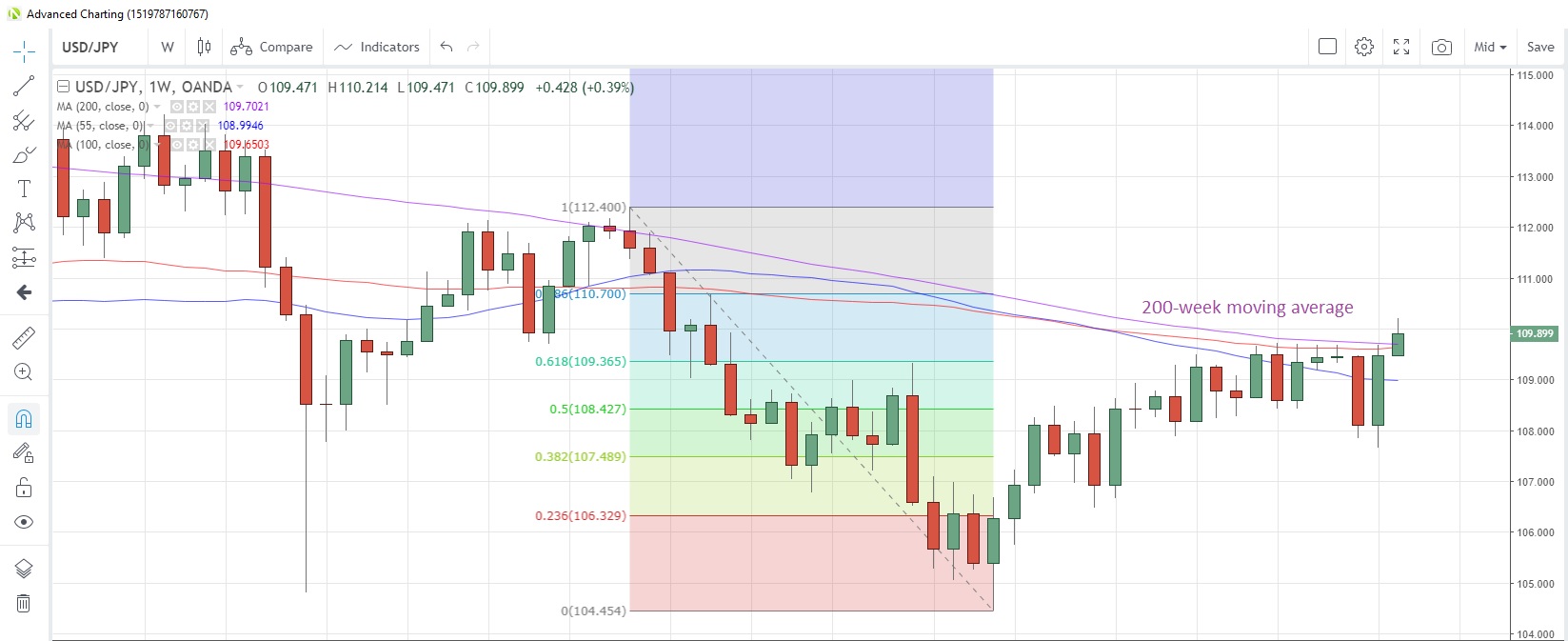Tariff review subject to compliance
The U.S. has said that it will not be reducing any tariffs on Chinese imports until after the presidential election in November. Furthermore, any adjustments will be subject to Beijing’s adherence to the terms laid out in the Phase One deal, which is due to be signed later today.
The news sparked a mild sell-off across equities, with U.S. indices falling between 0.19% and 0.26%, while the China50 index tumbled 0.78%. The risk-off mood was also evident in currency markets, with USD/JPY sliding 0.07% to 109.90 while AUD/USD fell 0.1% to 0.6895.
USD/JPY looks poised to snap a two-day winning streak which took the pair to 7-1/2 month highs, breaching the 110 handle for the first time since May 23. The 200-week moving average is at 109.70 and the pair looks on track to close above it this week for the first time since December 2018.
USD/JPY Weekly Chart

Earnings season starts well
The Q4 reporting season kicked off yesterday with the likes of JP Morgan (NYSE:JPM) and Citigroup (NYSE:C) out-performing expectations while Wells Fargo (NYSE:WFC) disappointed. The general view from the banking sector was that the U.S. consumer was still in a good position and the forward guidance from the sector was mostly positive. Bank of America (NYSE:BAC) is the next financial heavyweight in line to report tonight.
BOJ will not hesitate to ease further
In a speech at a quarterly meeting of the central bank’s regional branch managers this morning, Bank of Japan Governor Kuroda said the central bank would not hesitate to ease policy further if it was necessary to achieve the 2% inflation target as external risks remain high. He was of the opinion that consumer inflation would accelerate from the current 0.5% level toward the 2% target given a positive output gap and heightened inflation expectations. However, the current slippage in oil prices would act as a drag. The speech had zero impact on the Japanese yen.
UK inflation data on tap
Today sees the release of the slew of December inflation data from the UK, including retail prices, producer prices and consumer prices. The market’s focus will be on the CPI numbers, which are seen rising by 1.7% y/y, the same pace as in December.
Euro-zone industrial production probably fell 1.1% y/y in November, according to the latest survey of economists, half of the 2.2% decline seen in October. The region’s trade surplus is seen narrowing to €23.3 billion from €28.0 billion the previous month. There are no data releases scheduled out of Germany.
The U.S. calendar is mostly populated with second-tier data, with December producer prices and January’s NY Empire State manufacturing index the only items expected. A speech from Fed’s Harker followed by the release of the Fed’s Beige Book complete the session.
